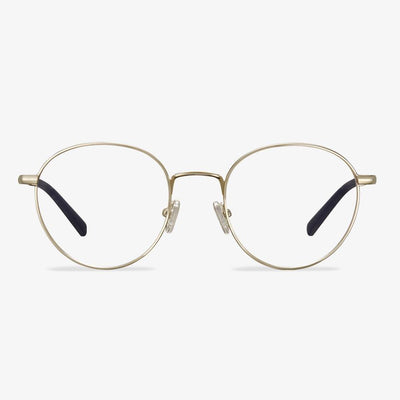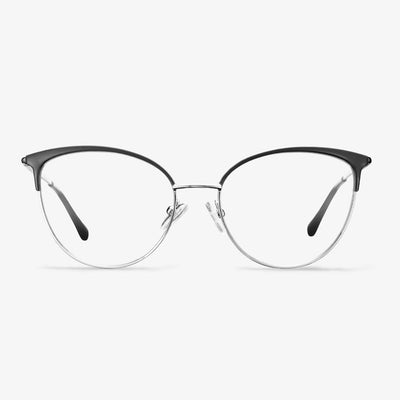How to Get Used to Progressive Lenses?
It is common that your vision may change when you are over age 40. You can find it is happening when have to hold your favorite book, the daily newspaper, or a restaurant menu farther away just to read it. This is an eye condition called presbyopia. It is normal and almost all of us get it as we reach middle age.
This eye condition often can be corrected by progressive lenses which allow you to see objects from far to near clearly. With progressive lenses, you do not have to switch your glasses to see far or near objects frequently.
However, since progressive glasses have three different prescriptions in one lens, it may be difficult for some people to adapt to the new ones. So, in this post, we will show you how to get used to progressive lenses.
What Are Plano Lenses?
Plano lenses are simply optical lenses which provide no corrective power. That is to say. Plano lenses are eyeglasses lenses that provide no vision correction. They are in widespread use as protective equipment or safety spectacles designed to protect against eye injuries caused by flying dust, metal, wood chips, and other particles.
What Does Plano Mean for Glasses?
If you need a pair of plano glasses, you will see the term plano, PL or 0.00 in the Sphere box on your eye prescription paper. That means that the lens has no corrective power. If only either of your eyes requires correction, you may be given a pair of glasses that as one corrective lens for the affected eye and a plano lens for the unaffected eye.
Advantages of progressive lenses
1. The appearance of the lens is like a single vision lens, and the dividing line of the degree change cannot be seen. Not only is the appearance beautiful, but more importantly, it protects the age privacy of the wearer. There is no need to worry about leaking the age secret due to wearing glasses.(https://www.koalaeye.com/collections/progressive-glasses)
2. Since the change of lens power is gradual, there will be no image jump. It is comfortable to wear and easy to adapt.
3. Because the degree is gradual, the replacement of the adjustment effect is gradually increased according to the shortening of the short distance. There is no adjustment fluctuation, and it is not easy to cause visual fatigue.
4. Clear vision can be obtained at all distances in the visual range. A pair of glasses meet the use of long-distance, near use, and various distances in between. It is especially good for teachers, doctors, music workers, and computer operators because these people not only need to see far and near objects clearly, but most of the time they also need to be able to see objects at intermediate distances such as blackboards, piano scores, and computer screens. This is not possible with lenses other than progressive lenses.
5. At present, both internal and external ophthalmologists agree that young people should wear low-degree convex lenses when reading and writing to reduce near-use adjustment, thereby alleviating or preventing the occurrence and development of myopia. This gives the progressive multifocal lens a new meaning and mission. Physiology found that excessive use of the eyeball adjustment function can form 'accommodative spasm' or pseudo myopia. Continued development can produce longitudinal eye axis elongation and induce 'true myopia' or axial myopia. The external luminosity of the progressive lens can be artificially added to the progressive luminosity. The upper is used for looking far, and the below is used for looking near, which makes the eyeball relax and over-adjust. The ever-changing luminosity of the lens replaces the 'accommodative power' that should have been activated, blocking the vicious circle of adjusting the eye axis elongation, making the eye not easy to fatigue, and slowing the development of myopia.
Disadvantages of Progressive Lenses
It is limited in applicable range. Progressive multi-focus lenses have no limit in strength and can be worn for myopia, presbyopia, or moderate astigmatism, but they are not suitable for everyone. Now there are more than two categories of asymptotic focus lenses, one is hard and the other is soft. A person who can understand and adapt to the temporary discomfort that progressive multi-focus lenses begin to produce can have a pair of glasses. If you have severe symptoms such as high blood pressure, dizziness, or have a misunderstanding on progressive multiple focal lenses, and you are unwilling to adapt to them, it will be difficult to try.
The glasses slid up your nose.
Although glasses often slide up your nose and pushing them up can be annoying, it's easy to pull them tight. If your nose frame is metal, use your thumb to shrink the nose pad until the frame no longer slides. If you have plastic frames, soak the arm in warm water for 30-60 seconds, then apply slight downward pressure to the end of the arm. This will make it fit more behind the ears, which will tighten the overall fit and prevent slippage. If tightening the frame doesn't work, try using eyeglass wax to stop it from slipping.
Bertoni polarized glasses
Bertoni polarized night vision driving glasses are made of strong, flexible, durable, and ultralight polycarbonate. Yellow polarization increases contrast, improves visual acuity, and filters out blue light. They are great for drivers, cyclists, and winter sports enthusiasts. The driving glasses with polarized yellow lenses block glare from headlights, reduce night driving glare, improve night vision, and improve color clarity and visual clarity. They are ideal for driving in low-light conditions. Most sports sunglasses glasses frames and goggles are made of polycarbonate because of their strong, thermoplastic, lightweight, and impact resistance features.
Polycarbonate vs Plastic Lenses: Which One Is Better?
From the above information, you may have learned some features of polycarbonate glasses and plastic lenses. So, do you know which one is better?
Here are some a few differences between both lenses to determine which one is better.
- Polycarbonate lenses are more expensive than plastic glasses.
- Polycarbonate lenses are very resistant to tint compared with plastic lenses which accept tints.
- Polycarbonate glasses have inherent UV protection, while plastic lenses do not have.
- Polycarbonate glasses have higher impact resistance and offer greater protection than plastic lenses.
- Polycarbonate glasses are lighter than plastic glasses.
- Plastic glasses have a higher optical clarity than polycarbonate lenses.
So, from the above part, you may have learned which one is better and you may have a decision of how to choose.











































